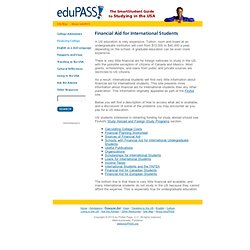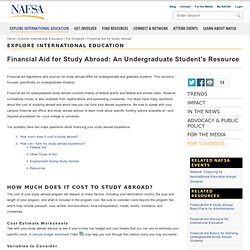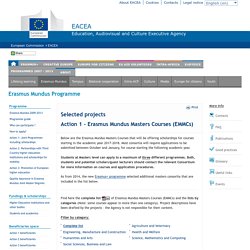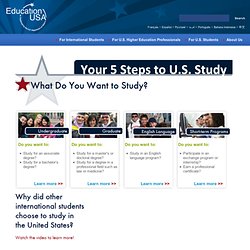

Financial Aid for International Students. A US education is very expensive.

Tuition, room and board at an undergraduate institution will cost from $15,000 to $40,000 a year, depending on the school. A graduate education can be even more expensive. There is very little financial aid for foreign nationals to study in the US, with the possible exception of citizens of Canada and Mexico. Most grants, scholarships, and loans from public and private sources are restricted to US citizens. As a result, international students will find very little information about financial aid for international students. Below you will find a description of how to access what aid is available, and a discussion of some of the problems you may encounter as you pay for a US education.
US students interested in obtaining funding for study abroad should see FinAid's Study Abroad and Foreign Study Programs section. International Students Seeking to Study in the United States. Financial aid regulations and sources for study abroad differ for undergraduate and graduate students.

This resource focuses specifically on undergraduate students. Financial aid for undergraduate study abroad consists mainly of federal grants and federal and private loans. However, scholarship money is also available from organizations and sponsoring companies. You likely have many questions about the cost of studying abroad and about how you can fund your abroad experience. Be sure to speak with your campus financial aid officer and study abroad adviser to learn more about specific funding options available at—and required procedures for—your college or university.
You probably have two major questions about financing your study abroad experience: How Much Does it Cost to Study Abroad? The cost of your study abroad program will depend on many factors, including your destination country, the type and length of your program, and what is included in the program cost. Variables to Consider. The best resource for applying to English Schools - ESL - for International students wanting to study abroad - Study in the USA. Commission franco-américaine (Fulbright Commission) Commission franco-américaine (Fulbright Commission) Action 1 - Erasmus Mundus Masters Courses (EMMCs) Below are the Erasmus Mundus Masters Courses that will be offering scholarships for courses starting in the academic year 2017-2018.

Most consortia will require applications to be submitted between October and January, for course starting the following academic year. Students at Masters level can apply to a maximum of three different programmes. Both, students and potential scholars/guest lecturers should contact the relevant Consortium for more information on courses and application procedures. As from 2014, the new Erasmus+ programme selected additional masters consortia that are included in the list below. Find here the complete list of Erasmus Mundus Masters Courses (EMMCs) and the lists by categories (Note: some courses appear in more than one category).
Filter by category: List of all Erasmus Mundus Masters Courses (EMMCs) Agriculture and Veterinary Engineering, Manufacturing and Construction Science, Mathematics and Computing Social Sciences, Business and Law. Students - Home. 5 Steps To Study. Want to learn more about studying in the United States?

Join the EdUSA Connects Webinar Series, offered by EducationUSA, to hear directly from U.S. college and university representatives. Topics range from admissions, financial aid, student visas, and beyond. Mark your calendar today to join an upcoming webinar. Can't attend a live webinar? Access recorded sessions anytime, along with the questions and answers provided during the events.